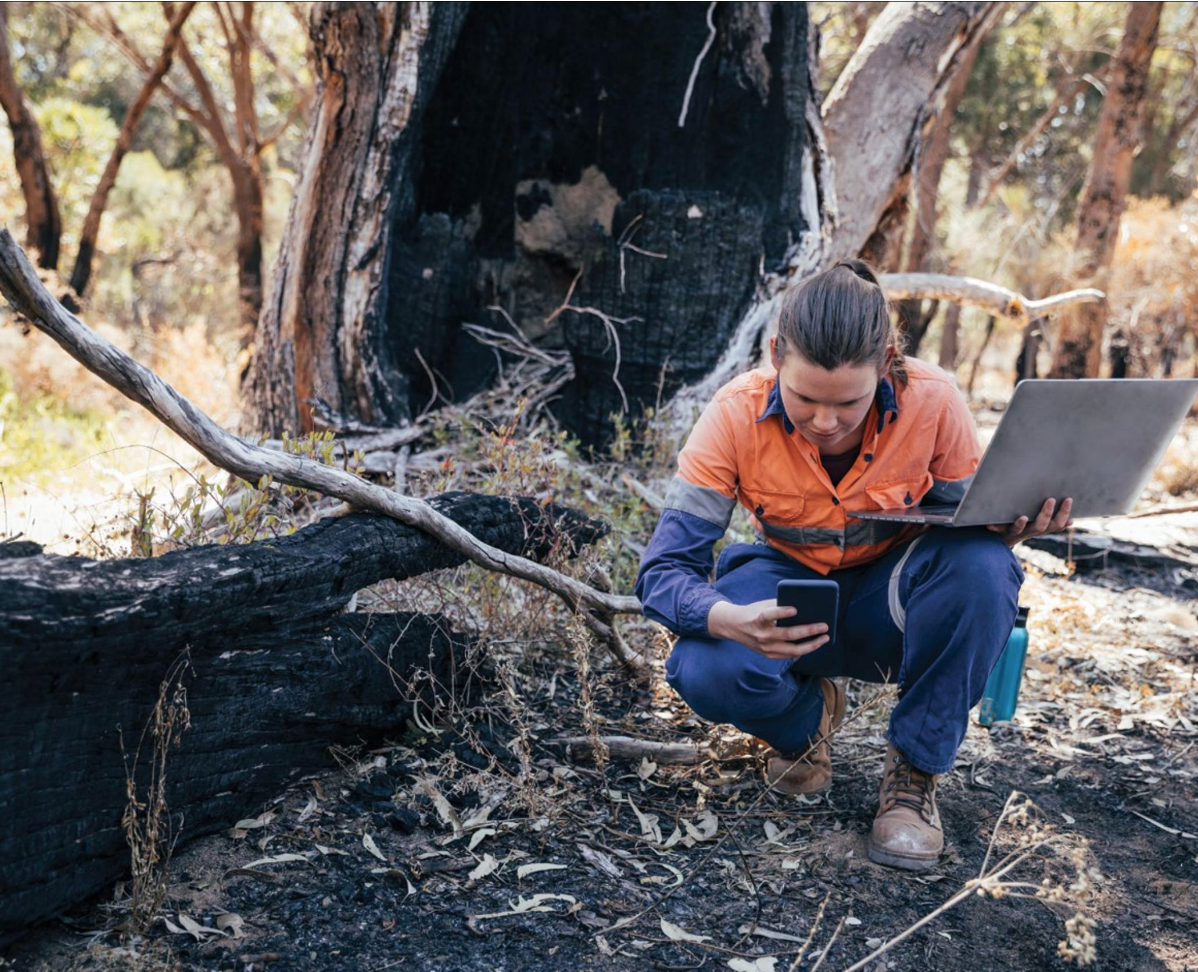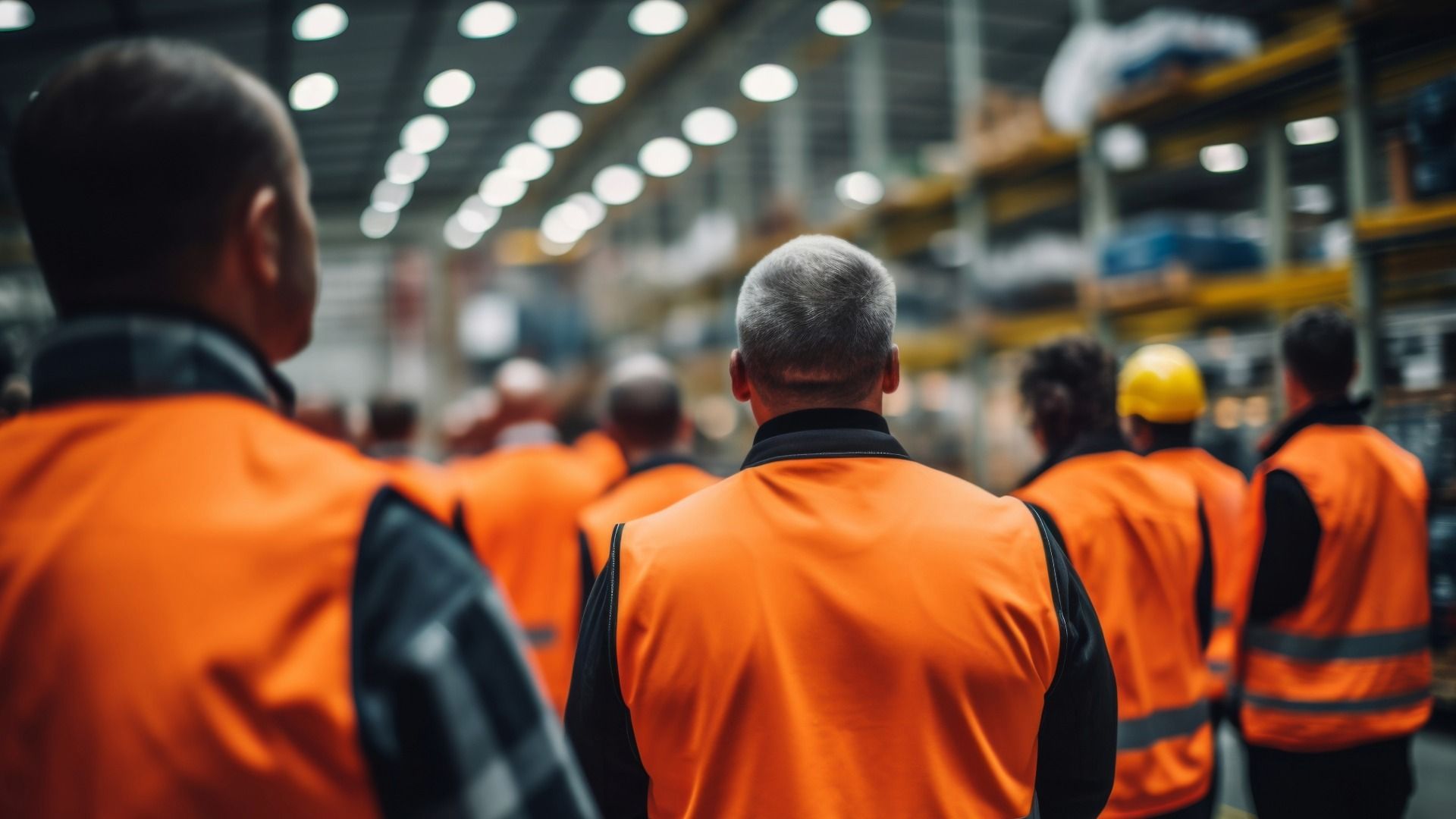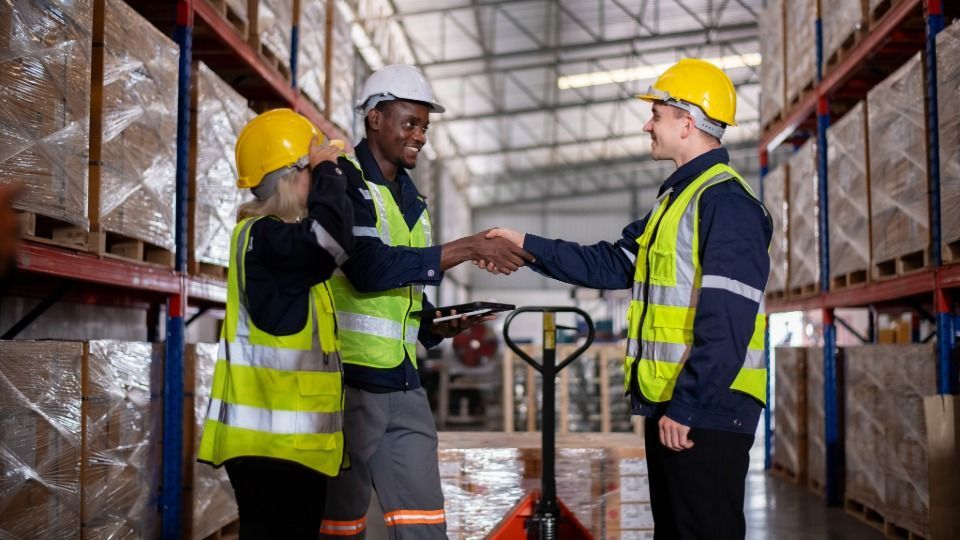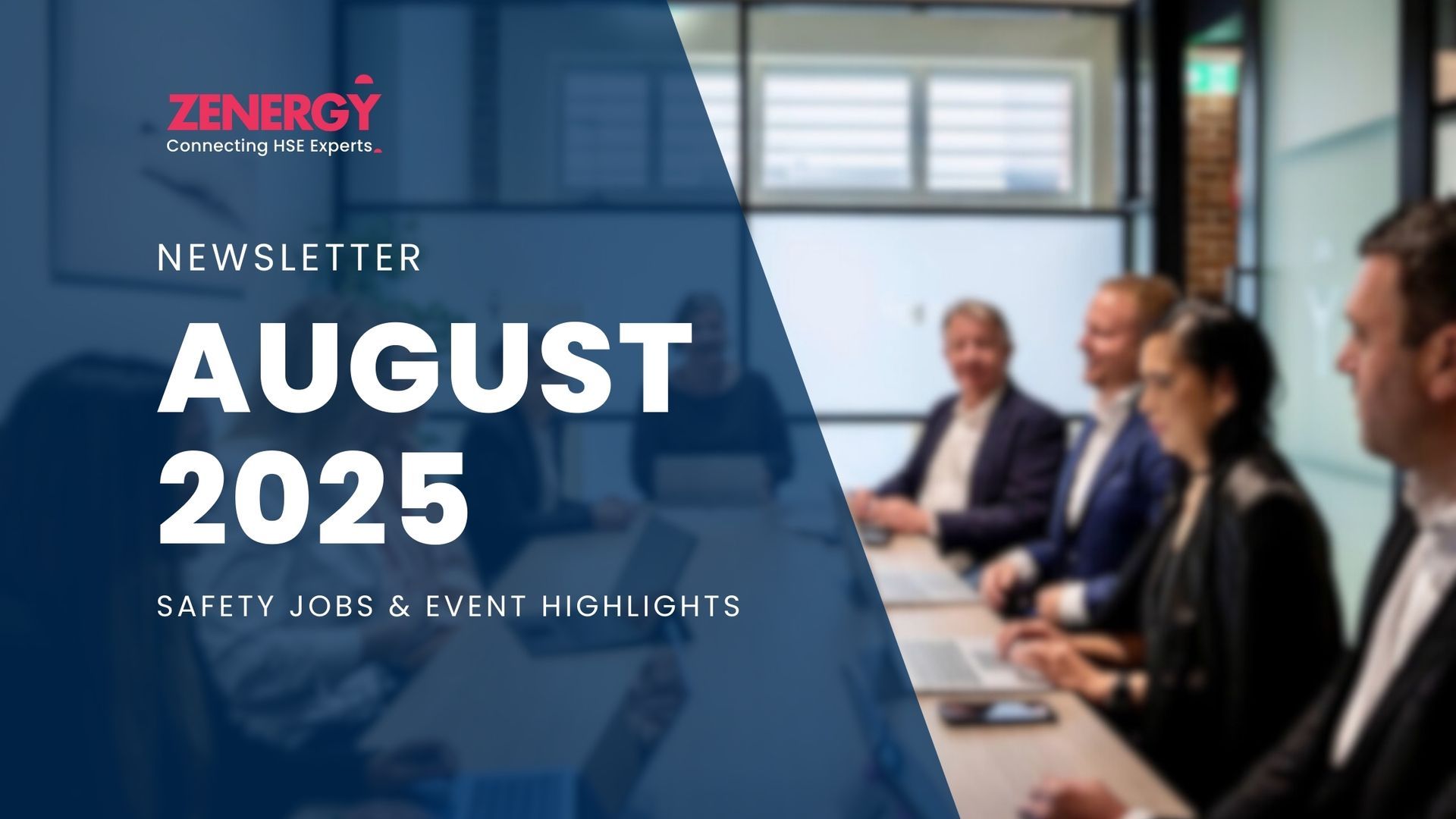Is the E in HSE the elephant in the room?
Is the E in HSE the elephant in the room?

Environment is an important focus for many organisations, which have looked to their health and safety functions to upskill in the increasingly influential discipline of HSE.
The function and practice of OHS have evolved in a number of ways in recent years. One of the more important trends has been the shift to incorporating environment-related responsibilities, and many traditional OHS and WHS roles have evolved into HSE, EHS or similar roles. The “E” component of such positions can encompass a range of priorities, including emissions, energy conservation, wastewater discharges, carbon footprint, water conservation, waste disposal, contaminated land, hazardous materials management, and complying with environmental regulations.
Such priorities are not the historical or traditional remit of OHS, but the “E” in HSE roles is “critically important”, according to Chris McNicol, manager for
Victoria, Tasmania, and South Australia at Zenergy, a search, recruitment services and consulting organisation specialising in safety, health, wellbeing,
and environment. “It’s very important for companies (size-dependent) to have a dedicated team and functional leader responsible, who reports to the head of HSE,” McNicol observed. “Most industrial organisations of size and environmental impact will (or should) be structured in this way. Strategic leadership of the ‘E’ should be non-negotiable.”
"In many instances, we are moving away from the traditional HSE category and are trying to be specific in what we are looking for"
Nonetheless, there may be gaps in this space in terms of skills, competencies, and experience at both a strategic and operational level. McNicol noted
company maturity and appetite for senior leaders to ‘own’ HSE can influence this: “Unfortunately, if lacking, this will stifle the ability of competent HSE
professionals. Vice versa is where HSE functions are too compliance-driven and reactive, with minimal capacity to influence positive change – even when
business leaders and workforces are crying out for it,” he said.
“Companies with well-established and mature HSE teams are always looking to enhance their capability and improve the health of the organisation: two areas here include contractor management and mental health. Both are very complex topics.”
HSE in practice
Fiona Murfitt, global VP HSE for Evolution Mining, an Australian gold mining company that employs more than 2000 employees across projects in Australia and Canada, says sustainability runs across HSE, risk and social responsibility and is integrated into “everything we do”.
“In many instances, we are moving away from the traditional HSE category and are trying to be specific in what we are looking for,” said Murfitt. “For example, when an environmental role is required, we will be specific about that and the required skills and behaviours. If it’s an overall generalist role with
HSE, then the enviro piece remains very important. So, my question is about unpacking for the specific role what is important, what can be learned and what
you would bring to the role.”
Keith Hoskins, general manager HSE at Endeavour Energy, a large electrical distribution business servicing 2.7 million people across Sydney’s Greater West,
the Blue Mountains, and the Southern Highlands, Illawarra, and South Coast of NSW, said that HSE practitioners need to gain both experience and qualifications in managing environmental impacts and risks arising from the activities performed within their organisation. “Th e skillsets required for environmental management do differ in many areas from health and safety, but there are also some common skillsets and tools such as a risk assessment approach in managing environmental risks that can be applied,” he said.
Similarly, HSE practitioners need to understand and be aware of social and community expectations often referred to as ‘your social licence to operate’,
according to Hoskins. “Not engaging with communities and seeking their opinions and feedback can have far-reaching implications for an organisation,” he said.
Terminology is also an area to be aware of as it can create complexity leading to confusion resulting in sub-optimal outcomes, he added. “As such, I suggest
practitioners need to use language that is simple to understand and can be easily communicated across your organisation and to other stakeholders such as
community interest groups,” he said. “At a strategic level, HSE professionals need to gain experience in undertaking material impact assessments across their
organisation engaging with the various stakeholders to ensure that material environmental risks are identified and that the associated environmental
management plans are implemented in managing these environmental risks.”
And while many of the tools and methodologies (such as incident investigation) can also be easily applied in managing environmental impacts,
Hoskins also said practitioners need a solid background understanding of how these environmental risks can be effectively managed ranging from
contaminated land to dealing with cultural heritage considerations.
Matching organisations with HSE priorities, skills, and experience
Most organisations are unique in what they require from HSE leaders and professionals, though this is often industry specific in terms of regulatory and other
requirements. However, some baseline competencies and skills are required in this field, according to McNicol, who said that a rounded skillset with a
contemporary approach to HSE is a good starting point.
“The most successful professionals have high emotional awareness, excellent relationship skills, and the ability to positively influence in all directions”
“The most successful professionals have high emotional awareness, excellent relationship skills, and the ability to positively influence in all directions,”
he said. “HSE heads need to guide and develop their teams to foster engagement in all levels of the workforce, especially high-risk operations. The effective use of data to drive decision-making is becoming more prevalent, as well as the adoption of an agile approach.”
In terms of the ability of HSE professionals to meet the requirements of organisations, McNicol said compliance and reporting are typically done well,
depending on the state of the company. “The shift towards a genuine partnership model where HSE teams are seen as enablers, positively influencing
the workforce to be empowered and accountable: this is where the most successful HSE teams are positioned,” said McNicol, who observed the highest
performing HSE professionals can successfully transition into different industries, based on their technical grounding, application of the principle,
and rounded (soft) skillset.
Murfitt also noted the type of industry would be important when determining the technical capabilities. If it’s an operational role, for example, she said understanding the basics around water, chemicals management, and environmental impact should be important. “The basic skills of any professional of understanding the legal obligations also come into play, as there are likely to be strong interfaces to approvals and licenses. These skills translate,” she said.
“Communities expect that our electrical distribution network is safe and resilient due to these extreme weather events”
“Critically, it’s not about citing legislation or saying ‘the law says’. Rather it’s about knowing the context in which you are operating and being able to
unpack the risks (or have others help you unpack them) and then help control them. The leadership elements: the ability to collaborate, garner support across the operations and lean in to provide support, are the softer skills that continually need to be developed. Understanding the nature of the operations continues to be important – and that is true for any role,” said Murfitt, who also noted that she “would also be good to see more curiosity” as there are also opportunities to revisit what “traditional” means.
Hoskins reflected on his own journey and recalled how environment was gradually added to his role. In the process he learned about the E in HSE while bringing in specialists with more environmental experience. “You can’t be an expert in every area. For example, I’m not a specialist in terms of how to
deal with contaminated sites. So, you do need to identify where those gaps are in terms of your skillset and where you need that specialist, whether you bring
that expertise in internally or externally,” he said.
Resilience and the ability to influence are also important in senior EHS roles, according to Hoskins, who explained that these skills and abilities help navigate
roadblocks to change and success. While Hoskins said he has been lucky in that the organisations he has worked for have been committed to EHS outcomes, he said it pays to learn how to influence. “There are moments when you will say, ‘Okay, well, it didn’t work this time, maybe I’ll try a different angle, or maybe I’ll approach it differently,” he said.
“That’s why influencing skills are important, and there are some common skills in looking at work, health, safety, and environment. You have to engage
in relationship management, use subject matter experts and know where you need them to help you on your journey and tap into your networks.”
In influencing internally, Hoskins said that being part of a benchmark “is quite helpful” as this helps others to understand how the organisation is
performing from an HSE perspective. “Just pick a benchmark like the Dow Jones Sustainability Index, or whatever index you choose, and you can use that
as a roadmap in terms of your journey. They can assist you with understanding how you are performing via materiality assessments for your organisation in order to understand where you might have some gaps,” he said.
“When we first went into our benchmarking ESG index, we said ‘we’re not going to just tick a box, and we’re not going to just get a good score. We’re
going to go get value out of it. That’s an important skill to have because it will help others understand how the organisation performs and compares, which is
important for Boards, shareholders and other important stakeholders.”
Important HSE trends for industry
Environment is an increasingly complex and regulated area of business for many organisations, and Hoskins said it is important to stay on top of these
trends for a number of reasons. “As an essential services business, I have seen a significant shift arising from the expectations of our customers and the
many communities we interact with daily,” he said.
“Over the past couple of years, we have witnessed significant weather events (such as storms, bushfires, and floods) due to the ever-changing climate.
Communities expect that our electrical distribution network is safe and resilient due to these extreme weather events.”
As a result, he explained that environmental management and sustainability are “critical enablers” – especially when modelling how these weather events might impact Endeavour Energy’s network, as well as new technologies that might make the network more resilient in the face of extreme weather events.
“Our business strategy has also embraced sustainability, and we have linked this to financial incentives – such as being the first network distributor
in Australia to achieve a sustainability linked loan. The sustainability linked loan includes setting ambitious targets in reducing our carbon footprint,
biodiversity through the replacement of more vegetation than we are removing, eliminating all waste going to landfill, and improving the health and wellbeing of our employees,” he said.
Practitioners also need to have a good understanding of the environmental legislative requirements to meet the various compliance obligations within
the jurisdictions they operate in, Hoskins added. This point was echoed by Murfitt, who has witnessed increased complexity within the regulatory space, including approvals for project and rehabilitation management, in addition to increased complexity in disclosures and reporting. “Clearly, the focus on emissions and carbon reduction is becoming increasingly dynamic, and the creation of the carbon reduction pathways and broader ESG discussions at the
boardroom are driving this,” she said.
McNicol also said the noise surrounding ESG (environmental, social and (corporate) governance) and sustainability “has been getting louder in recent years (finally).
“It’s a broad area, and some companies are far more advanced than others. Kudos to ESG and sustainability leaders who have been successfully driving these
strategies for 10-plus years already. It’s not too late, though, and companies across the board, listed or otherwise, are starting to invest in capability. It starts
with a genuine appetite from business leadership; then the appointed head needs to develop a strategy that is fitfor- purpose, results-driven and tangible,
realistic, as well as commercially viable for the company,” McNicol explained.
The importance of networking
For HSE professionals at all levels, Chris McNicol, manager for Victoria, Tasmania, and South Australia at Zenergy, described networking as “a great place to start”, he said. “Your peers, both internal and external, will be able to share their experience and how they learn and develop with you, and vice versa. Even the most respected and successful HSE leaders will tap into their networks where they feel they can leverage certain expertise and solve complex problems,” he
said.
Keith Hoskins, executive general manager HSE at Endeavour Energy, also underlined the importance of networking with others who have more experience in EHS. “This was about learning from what they’ve discoveredas a result of their journey. Learning from other people through networking is really important in terms of building up your skillset and capabilities. Education will get you so far, but you still have to be able to bring that to life, and you’ve got to practically be able to bring an organisation on that journey,” he said.
Similarly, Fiona Murfitt, global VP HSE for Evolution Mining, recommended that HSE professionals engage in networks broader than their established areas of expertise. “Be prepared to learn and seek to understand, and this could mean getting involved in working committee for associations if you are just starting
out. Seek out mentors and ask to have coffees with people,” she suggested.
In doing so, she encouraged self reflection on what is important to you, from growth in knowledge to leadership development or even money and travel. “There are a multitude of opportunities out there, and if you widen your network, then you get to understand the breadth of what could be available,” she said.
“The other thing to think about if you are starting out is if you are willing to travel and relocate as some of these roles that help gain you invaluable experience can be easier to obtain in the field. Those locations are also in beautiful parts of the world.”







